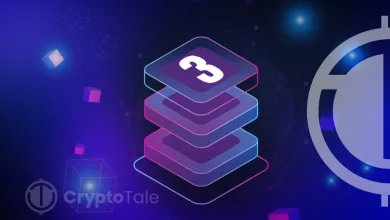What is SocialFi? How Does it Work? A Beginners Guide

Social media has become an integral part of our daily lives, and we often spend hours on them. But traditional platforms are filled with various issues, such as centralized control, censorship, privacy, and more. Furthermore, they profit from user data, all the while offering a limited amount of control over data for users and content creators. All these will be over with SocialFi, a new technology that leverages blockchain and web3 principles to empower users and creators, allowing them to have control over their data and even monetize them. In this article, we’ll discuss SocialFi, how it works, its importance, and its challenges.
What is SocialFi?
Social Finance, also known as SocialFi, is the amalgamation of social media and decentralized finance. SocialFi platforms follow the web3 approach, where influencers, content creators, and participants can have full control over their data. Because there is no centralized authority that collects data on the background or screens the content, users have freedom of speech. Furthermore, they can even monetize their social media interactions.
SocialFi hopes to shift power from centralized entities into the hands of users. As such, these platforms are structured as decentralized autonomous organizations (DAOs), where ownership of exclusive content is managed through NFTs.
How Does SocialFi Work?
Decentralized Autonomous Organizations (DAOs) manage the governance of platforms and ensure that no centralized authority controls user activity within the network. Furthermore, every decision made on the platform, such as changes in protocols, incentive distribution, and more, is voted on by DAO members. This makes it impossible for a single figure or centralized authority to take control of the platform.
Monetary rewards on the SocialFi platform depend on social DeFi tokens. These can be native tokens or other tokens traded on the platform. Also, content makers on the platform can build their tokens and earn from them. For example, suppose a user wants to link with a certain influencer; they must hold the tokens of that influencer, and as a result, the token has a value attached to it. Furthermore, these tokens have a variety of uses depending on the influencer.
Why is SocialFi Important?
SocialFi is crucial because it was developed with the goal of disrupting the entire social media industry with its web3 characteristics. According to research from GWI, a normal social media user spends 2 hours and 27 minutes on social media platforms. These platforms gather the user’s data (interactions, engagement, and more) and monetize it. In addition, there are also many instances where the centralized entity bans a content creator from speaking about sensitive issues. Other than these issues, there are plenty of situations where they use their power to treat users unfairly. This is where SocialFi comes in; they are platforms totally different from what you see on Web2, such as Facebook, Twitter, Instagram, etc. They are all about solving the significant issues surrounding web2 social media platforms. Here are some of the key factors of SocialFi that help it differentiate from web2 and why it is so important.
Decentralization
In Web2 platforms, most of the data is stored in a single server by the centralized entity. They monopolize users’ data, interactions, and privacy for their own benefit and sometimes monetize these data.
SocialFi is based on Web3, and it eliminates the middleman, the centralized entity, from the equations and directly gives full control of the network to the users. The data is spread across various nodes across the network, which eliminates the single point of failure. Furthermore, users can decide on what data they want to monetize.
Freedom of Speech and Censorship
In Web2, censorship is often hated because it restricts freedom of speech. But on the other hand, without censorship, harmful content could be distributed. Web2 companies struggled with this as it was extremely difficult to find the balance between them.
SocialFi platforms use decentralized on-chain labeling, where all the posts are organized and parsed using a rules engine to differentiate publicly-viewable posts. Each node (individual) can choose what content they want to engage with and what to block. Therefore, the final responsibility for choosing harmful content lies in the hands of the users. This method allows content creators to express themselves to the fullest without worrying about the repercussions.
Monetization
SocialFi has social tokens that operate in a similar fashion to utility tokens. Unlike other kinds of tokens, social tokens allow users to create their own tokens. For content creators and influencers, this is especially useful in that the tokens can indicate who engages with a creator’s content. Additionally, creators can define a threshold where users having social tokens over that threshold can directly message them without the fear of spamming and increase the interactions with loyal followers. Apart from that, they can also offer users a subscription model to access premium quality content and even make use of NFTs to monetize their interaction.
What Are the Challenges Faced by SocialFi?
It has countless advantages, but there are still too many hurdles to overcome before SocialFi will be widely adopted. The challenges of SocialFi are,
- Scalable Infrastructure: Scaling up infrastructure is SocialFi’s first major issue. A vast amount of data is handled every day by Social Media platforms like Facebook, Twitter X, and many others. For this, they build the required infrastructure by building data centers, cloud computing, etc. The issue here is whether SocialFi platforms can handle petabytes of data and process them without the help of centralization.
- Sustainable Economic Model: Another issue is SocialFi’s economic model. SocialFi platforms attract user attention through lavish token rewards, but history has clearly shown that incentives are nothing but short-term growth hacks and are not appropriate for the long-term growth of the tokens or platforms. Currently, all the aspects regarding the incentives are being experimented with on a small scale, and only after they have undergone the stress of several market cycles and others would SocialFi be ready to go mainstream.
Popular SocialFi Platforms
Deso
Deso is a decentralized platform developed to scale SocialFi apps so that they can serve the more than 1 billion users available on social media platforms. It features a metaverse, end-to-end encryption, an NFT marketplace, a search engine, and more. Furthermore, users can create a wallet, create and buy NFTs, invest in projects, monetize content, and more.
Friend.tech
Friend.tech is a SocialFi platform built on the Base blockchain, an Ethereum layer 2 network. It was designed for the sole purpose of redefining social media interactions. Friend.tech archives this by adding monetary stakes into the interactions. Users can connect with their friends or relatives, join private communities, and enjoy various other perks that the platform has to offer through ‘keys.’ Keys are a social token unique to Friend.tech that can be bought and sold on the platform. On March 3, 2024, Friend.tech version 2 was launched with various new features.
Lens Protocol
Lens Protocol is a SocialFi platform built on the Polygon blockchain in 2022. It allows content creators to maintain ownership and fully control their social interactions, including posts, community forums, and more, through their personalized NFT profiles.
Conclusion
SocialFi is a transition in the social media space that combines decentralized finance with web3 concepts. This helps content creators, influencers, and users have full control of their data, content, and interactions, bypassing the centralized gatekeepers of Web2 platforms. SocialFi is an alternative social media platform free from centralized control. It offers monetization through social tokens and NFTs and through decentralized governance, which alleviates the exploitation of data, censorship, and other problems inherent in the current media platforms. Nevertheless, scalability and the long-term sustainability of its economic model are obstacles to mainstream adoption. However, if the challenges are overcome, SocialFi can change the way we interact with social media and digital communities.





